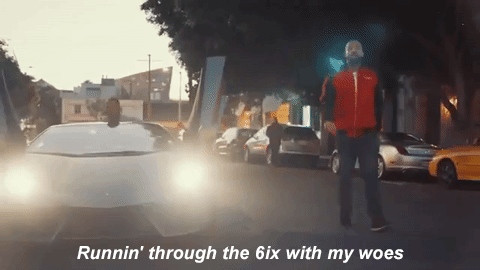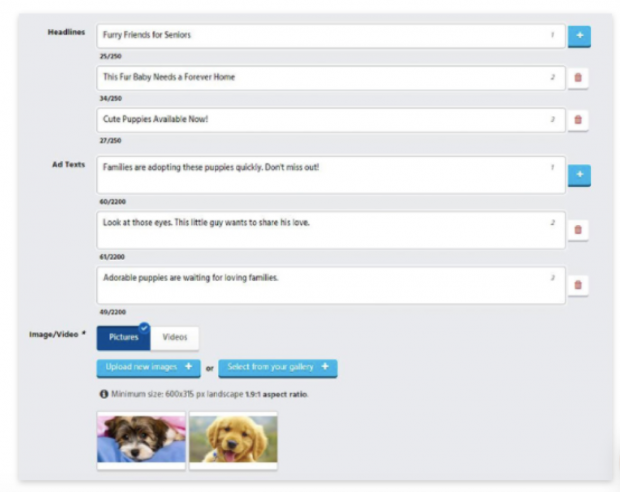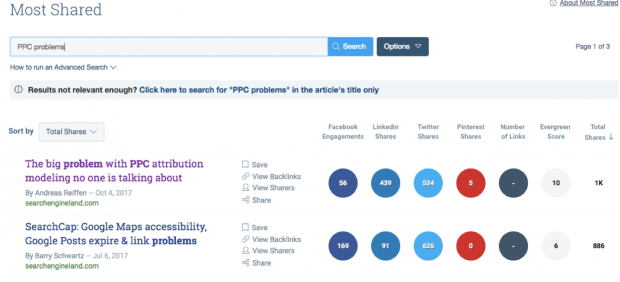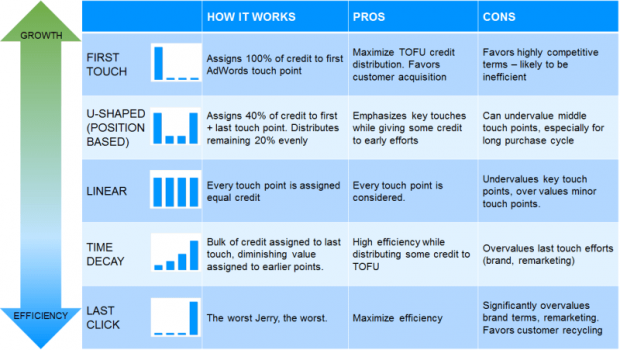This week Acquisio was thrilled to be part of Unbounce’s Marketing Optimization Week (MOW), a first-of-its-kind, four-day online workshop for marketers like you! We asked some of our biggest customers and in-house experts what their biggest PPC problems and woes were and solved them for the MOW audience to make the lives of PPC marketers better everywhere.
So what are we talking about when we refer to PPC problems or woes?
Well we mean any kind of frustrations that campaign managers face every single day that are part and parcel industry-wide. We don’t mean feature updates inside AdWords or Bing for example – we mean real woes that you’re facing right now today and pretty much everyday. Woes that you may be thinking about as you’re running in the six.
Woe #1: Explaining Account Changes
The first woe that we’re going to tackle is a video submission from Hanapin Marketing, one of our favorite clients. Their team of experts is renowned in the industry. As creators of Hero Conference and the PPC Hero blog, no one knows PPC better than Hanapin. When they cry, the industry cries – so we reached out to them to get their team’s biggest PPC woes. They sent over a few that we’ll cover and the first is from Lauren, who says her biggest woe is how to explain account changes to clients.
Changes to account performance, for better or for worse, can be as a result of your actions (or someone else on your team), your machine learning tools and/or systems, or on the side of the publisher.
We want to know as campaign managers what changed so we can either replicate or avoid that situation moving forward and we often have to explain these changes to clients or colleagues. Let’s tackle this woe.
Human Changes
If the change was as a result of your actions, it shouldn’t be too hard to measure when you were last making changes in the account and correlating that to spikes or drops in performance. Some basic back tracking and Analytics can help there. Here is a detailed routine to look back into human account changes:
First and foremost, different campaigns/accounts have different KPIs. Different clients are looking for different results. Some people want online purchases, some want form submissions, others just want traffic (clicks), and some people just want brand awareness (impressions).
So, before you start assessing how your campaigns perform, it’s important to have your KPI hierarchy in mind and know which metrics are important for your client. Once you have that and are sure that your KPIs are tracked properly (sometimes it’s the conversion pixel that was installed crooked and is not firing properly that makes it look like your performance ‘went down’), start with an overall account analysis. Open up any graphs displaying your KPIs and look for inconsistencies and things that don’t make sense, like an increase in spend plus a decrease in conversions. Now you can figure out when things went south. Once you know when the performance started going down you can start your detective work to find the culprit that made your conversions go down.
In order to see how each campaign performed month-over-month or week-over-week (depending on the business) use the date range compare function. It allows you to see which campaign had the biggest drop in KPI metrics. Once you know which campaigns were to blame for your overall performance, dive into that campaign and analyze all its components starting from ad groups to keywords. Start with large problems and work your way towards more granular ones. Check every ad group, every ad and make sure they’re all approved. Check to make sure that the keywords that were responsible for conversions last month for example are all above the first page/top position bid. It’s also important to comb through your change history. Very often big drops in performance occur when the biggest changes are made to accounts or campaigns.
If you go through the account and you still aren’t sure, start hypothesizing about other factors that could have potentially influenced your performance. Since campaigns do not exist in a vacuum, and the business environment is always changing, we need to be weary of other factors that can potentially affect campaigns in a negative way, like seasonality, new competitors disrupting the market and so on. For instance, to rule seasonality out, you can always check last year’s performance using the date range compare function to find out how you performed and compare it to this year.
For competitors, you can always check auction insights in the keywords tab, to see how successful your keywords, ad groups, or campaigns were compared to other advertisers participating in the same auction. At the same time this ‘report’ is usually based on a small sample of data and you should take it with a grain of salt.
The last thing is to always use an ad preview tool to make sure ads and ad extensions are displayed properly. The tool also allows you to make sure that other competitors are not bidding on your keywords and/or territories and to make sure that there are no negatives hidden somewhere in the shared library that can prevent your ad from showing.
That’s a pretty comprehensive audit and if you had to do this for every account everyday it would be woeful indeed. But if you make a little checklist or routine to go through it can make life a bit easier when trying to diagnose human-induced account changes.
Machine Learning Changes
But when it comes to machine learning the problem prevails because a machine isn’t going to tell you why it made the change it did. As creators of machine learning we can tell you that the machine’s decision making process is quite complex, relying on millions of different data points. When it comes to applying machine learning, marketers need to give it time to figure out the account, but after that the machine should be improving performance and that should be good enough.
So again the main reason we want to know what happened inside an account is so we can replicate what worked or avoid repeating what didn’t. If the machine learning is working, the only thing to replicate is to turn it on for another account.
Publisher Changes
Finally there are publisher changes that are part and parcel in the industry and unfortunately in this case you have to blame Google, Bing, Facebook etc. While we love new changes from publishers to move the industry forward, they can peskily impact campaigns. The best thing to do is take them in stride and realize that sometimes they just happen.
Woe #2: Breaking Through the Status Quo
The second woe we’re going to tackle is all about breaking past the status quo in PPC. This woe was an anonymous submission that said:
“All my campaigns plateau after 3-4 months in terms of results, is there a way to supercharge campaigns? Every campaign manager is reading the same PPC blogs day in and day out, applying the same tools and techniques for optimization and competing with one another. How can my campaigns actually get ahead?”
This is a great question and this problem plagues every type of marketer in every industry honestly. For PPC marketers there are a few strategies that can help you get above the status quo.
Machine learning technology is the easiest way to break past your competition effortlessly. Putting algorithms to work for you means you’ll have more time, more conversions and more money, according to our latest performance report measuring more than 30 thousand accounts inside Acquisio. The thing is that once everyone starts using machine learning this will become less of an opportunity to get ahead. Therefore, the best time to apply an intelligent data science approach to your campaigns is now before it becomes the new status quo.
Thinking outside the box when it comes to your ads is another way to stand out. Sometimes taking risks with ad copy or even images can go a long way. One of the most striking campaigns we saw was a huge banner with a man staring at his glowing crotch inside a car with a huge headline that said “Crotches Kill.” The whole campaign was a PSA against texting and driving. So it’s important to remember that effective messaging and visuals truly can help your ads stand out, even if that seems obvious.
“Crotches Kill” banners return as AB laws change this yr. Despite serious undertone, still one of my fav PPC ads eva pic.twitter.com/PaHcA8g85Y
— Chandal (@ChandalN) June 28, 2016
Having amazing images whenever possible on every Shopping, display, social ad etc. is a good idea because humans process visual information thousands of times faster than text, so it’s always in a marketers interest to use high quality visuals to convey messages whenever possible.
And if you’re having trouble thinking outside the box, you can always interview customers or consumers of your products or services and ask them what they search for, what gets their attention or what they want from a business like yours.
You can also check your impression share to make sure you haven’t already saturated the available demand. If you have, see if you can change or expand your target market.
And also don’t forget to keep an eye on your competition.
Finally, many PPC marketers can get clicks but don’t always get conversions. The best way to get ahead of the competition when it comes to sealing the deal is to work on your landing page! Unbounce is your best resource for optimizing landing pages and improving conversion rates on them for better performing PPC campaigns.
Woe #3: Constant Industry Updates
Woe #3 is another anonymous submission that says:
“The biggest challenge is minding and monitoring constant changes in the PPC environment. PPC managers are never caught up and plagued with the feeling of constantly being behind on the latest industry updates.”
The truth is that it’s nearly impossible to stay on top of every industry update between AdWords, Bing, Facebook, Instagram and programmatic. Marketers have to have really good peripheral vision and monitor changes and updates, while continuing to work through their day to day. Don’t try to understand and act on every update, only pause your momentum for changes you know are actually impacting accounts and updates that will actually impact your performance.
Even the mobile interstitials update for example was overblown for the impact it had on marketers. This is a good example of an update that was a huge distraction while in the end being low impact. So sometimes even updates that are said to have a huge impact on advertisers don’t in the end… Again monitor the situation and only drop everything when you know for a fact that your accounts will be affected. Keep calm and carry on.
Woe #4: Facebook Ad Copy
Woe #4 is another Hanapin staff submission video from Tanner Schroeder. His biggest PPC woe is Facebook ad copy. Let’s see what he had to say.
Our solution is a shameless plug on our part. We have Acquisio Social that was built to create hundreds of ads in minutes. You can test tons of ad variants, get them set up in just minutes and create alternative text, headlines, images and segments for each ad.
There are other tools available to marketers with a similar raison d’etre as well. Otherwise the best you can do is make use of the “Create similar ads” button inside Facebook ads, as well as the Power and Bulk Editor.
Woe #5: Choosing an Attribution Model
The next woe we’re tackling is attribution modeling in PPC – this is huge! It’s actually so huge that this is the most popular PPC woes question on the internet according to social shares as measured by Buzzsumo.
Selecting an attribution model is like choosing between a range of sport and dress shoes. Each has their own purpose and different models work better for some individuals than others depending on the preference of the look and fit. Marketers need to have an understanding of what they’re trying to achieve with campaigns and how these fit into their overall business goals. Looking at the chart here, marketers have to assess broadly if their campaigns are intended to drive business growth or increase efficiency, even though the two are definitely related.
According to Aaron Levy from Elite SEM, U-Shaped, Linear and Time Decay attribution models offer a balance between growth and efficiency based attribution models. He thinks first touch and last click just don’t offer enough information about what’s going on inside the funnel.
But it depends how long your customer funnel is. Do your customers need 4 or 7 touch points before making a purchase? Marketers have to measure their customers’ behaviour to understand how PPC fits into the funnel and which attribution model to implement.
Aaron reminds readers that Google has made advancements to attribution modeling inside AdWords, but of course this is only one channel and attribution modeling is made to measure the big picture. It’s made to uncover and reveal the interdependent relationships between marketing channels, and how they work together to drive sales and measure the ROI of your campaigns.
Woe #6: Too Many Tabs and Window
Next, woe #6 is too many tabs and windows on a given day across different client accounts and this is the last one that comes from Hanapin Marketing.
With more and more tools, widgets, systems, processes and documents to assist your workflow, the opposite can quickly come about, leaving you again overwhelmed with tabs and windows. Account managers need to develop a routine around each account and get into this groove as much as possible. Work on these few client accounts Mondays, and these few on Tuesday for example…and plan accordingly for a day of bid adjustments before big events, sales etc. Keeping only the important metrics in your saved column view and creating custom sets of filters to sift through the data can really help as well.
Other ways that you can reduce tab and window overload is to consolidate whenever possible. So choosing tools that are all encompassing, from campaign set-up to reporting across channels is the best way to reduce the number of places you’re going to get information and make account adjustments.
Finally, and this applies to all business professionals – be more effective when you work by minimizing other distractions. So when you’re doing campaign work as part of your weekly routine, close other programs, tabs, close Slack and your email if you can. Less clutter on your desktop is the easiest solution.
You should also make use of folders, the F3 button if you’re using a Mac and prioritize! Other than that, it’s just part of marketing right now. As AI and machine learning systems emerge and seek to streamline marketing processes, tab and window overload will likely subside.
Woe #7: Never Enough Time!
Woe #7 comes from the MOW audience during the Q&A who said:
“I never have enough time in a day. And then people tell me to save time with automation tools, but again I don’t have time to test each of them. Comparing tools to save me time is a huge time-suck! What do you recommend PPC managers do?”
If you need more time in PPC there are seriously a ton of tools to help – even though the overdose of tools and techniques is actually a problem in itself too, which can leave PPC marketers feeling overwhelmed. But the good news is that despite it all there are a few things out there that can help. First and foremost marketers have to know themselves and their goals well, so that they can easily decide whether or not a certain tool makes sense for them.
Marketers can also use checklists and comparison tables to cross-reference features that meet their needs and budget. Third party assessment tools and programs like ClickZ or MarTech’s Guide to B2B Automation Platforms are also helpful to give a fair sense of which tool works best for individual needs. But again, you have to know what you want and need in a tool for those techniques to work.
If you really have no idea which tools will work for you then you can demo a few, even at the same time. You could put a few test accounts on one tool and a few accounts on another and race them against one another. In general, PPC tools like Acquisio are designed to save marketers money by allowing cross-channel optimization, account cloning between publishers, streamlined reporting, intelligent bid and budget management using machine learning, time-saving Facebook ad copy generation and much more.
Woe #8: KW Research is Never Ending and Tedious
This woe also came from the audience questions at MOW and said:
“There is always keyword research to do to support new campaigns and new clients and this work is tedious. Do you have any solutions to never-ending keyword research?”
There are a few solutions that will save you time and energy with keyword research, but overall it’s not going away. For example, marketers can use keyword templates to help reduce the time it takes to do the research for each client or campaign. Most importantly though, keep it light without missing opportunities. So if you’re doing keyword research for let’s say holiday decoration lights, you want to make sure you capture all of the words that show an intention for string lights, while avoiding any other permutations of light-related keywords. Get hyper focused, targeted and relevant with your research. Start with a wide cast net but don’t spend too much time searching.
Remember publishers are also getting really good at making keyword suggestions to support your research inside live campaigns. You can add and remove keywords or mark them as negative later, meaning your keyword research is a work in progress – an ongoing process of refinement. SpyFu has a tool to help with keyword discovery and there are a number of other resources out there for marketers.
But if you’re so sick of keyword research that you can’t even say the words out loud, hire a well-trained intern to do this work for you! Overall, I encourage PPC marketers to embrace keyword research and all its redundancies because honestly, where would we be without it?
We would sincerely like to thank Unbounce and all of the Marketing Optimization Week participants for allowing us to be part of such a great event!
Image Credits
Feature Image: Unsplash/Casey Horner
Videos are property of Acquisio with permission from Hanapin Marketing and should not be reproduced without permission.
Image 1: Screenshot from Acquisio
Image 2: Screenshot from Buzzsumo
Image 3: Screenshot from Search Engine Land







